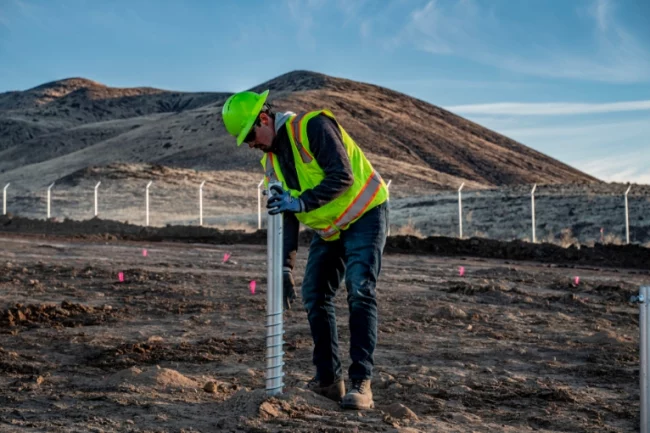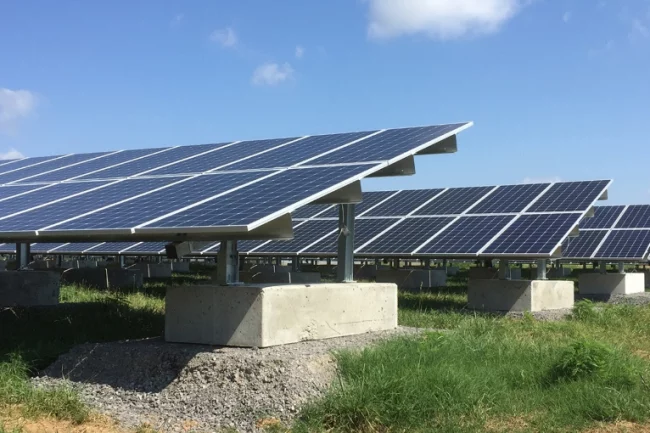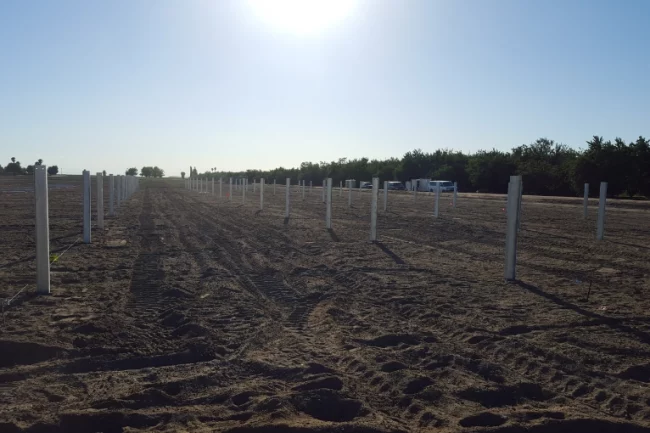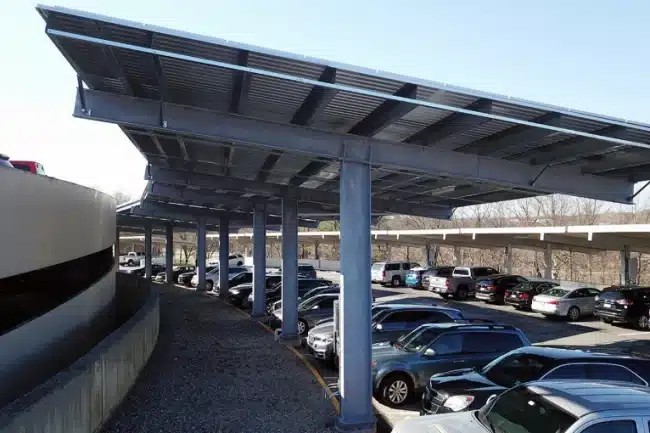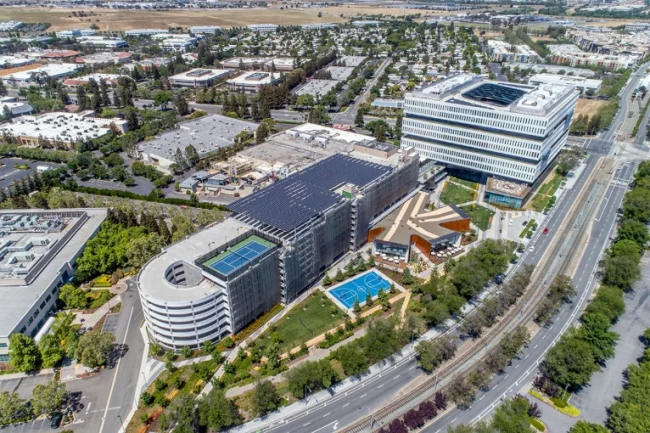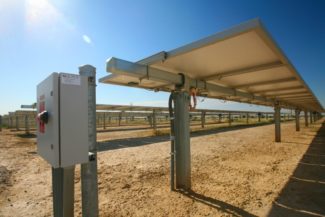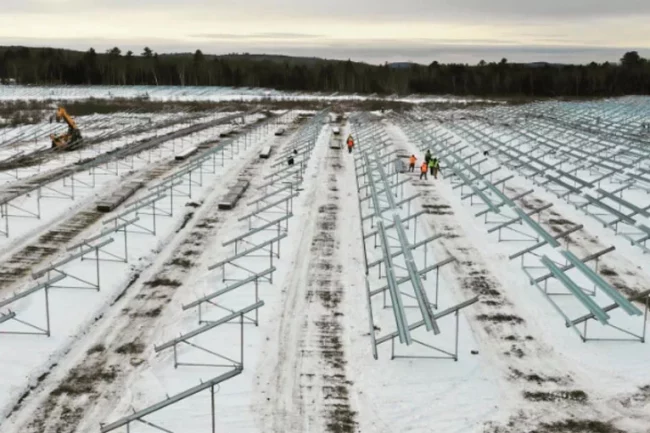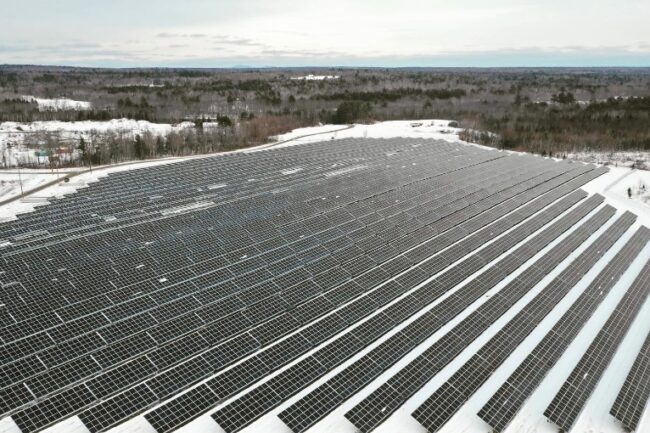Terrasmart Projects Outperform Weather and Terrain Challenges
Striking the right balance between risks and rewards lies at the heart of solar success. Often, that balancing act starts with site selection. Flat sites are simplest to manage, but they come at a significant price premium. Rocky, hilly terrain, on the other hand, can offer discounted leases and higher margins — but contending with technical complexities can be daunting.
Refusals, slopes, questionable subsurface conditions, extreme weather, and other unknown variables can impact your installation schedule and project margins. These challenges require quality ground-mount solutions from the outset — from racking design and fabrication to project management and installation — to unlock a project’s maximum value.
EPCs and developers facing complex projects can leverage Terrasmart’s unique track record of PV success in tough terrains and harsh weather. The following projects illustrate our team at work across a variety of challenges to help minimize risks for the strongest returns.
1. Standing rock-solid against the toughest terrain
Rocks, ledge, and boulders can blow up a project’s schedule and result in costly refusals. Because refusals are often the least predictable factor that can turn a good project bad, Terrasmart turns to its ground screw foundations to eliminate 100% of the risk. The 61-MW Turquoise solar project clearly illustrates this value.

Turquoise sits on roughly 180 acres of igneous rock and ledge at the base of 170 mountains spread across Washoe County, Nevada.
After numerous failed trials by other solar installation companies that attempted to drive piles into the site’s rocky terrain, McCarthy Building Companies hired Terrasmart for its integrated design, engineering, surveying, and mechanical construction services.
Known for its proprietary ground screw foundation and rock drilling machines, Terrasmart quickly conquered the site’s extreme rocky terrain — saving time and cutting costs by eliminating unnecessary clearing and civil work.
Terrasmart operators operated three rock drilling machines to secure the ground screws and install the company’s adaptable fixed-tilt racking system — GLIDE Agile.

The project, located in Reno Technology Park, sends green electrons to Apple’s Nevada data center via Nevada Energy. This milestone project won multiple accolades, including Utility-Scale Solar Project of the Year from Solar Builder magazine.
2. Holding sway against the steepest slopes
If a picture is worth a thousand words, then even just the image of the slopes on the West Brookfield project in Ware, Massachusetts can give you vertigo. With this site’s dominant rocky terrain atop immense steep slopes, Terrasmart had to install more than 2,000 ground screws to secure its fixed-tilt GLIDE racks for this precipitous 5.95-MW system.

When exploring options for single-axis trackers, consider those with high slope tolerances to maximize yield on hilly sites. Known for its performance on even the steepest terrain, environmentally sensitive land, and frost-laden soils, TerraTrak is the only integrated A-frame SAT that can use either ground screws or driven-pile foundations.
TerraTrak’s advanced design offers 20% north/south slope tolerances and up to 36” of height adjustability to minimize land grading and other civil work, cutting construction costs and keeping schedules tight.
The 6.5-MW Rumford project takes full advantage of this slope and terrain flexibility along with Terrasmart’s ability to clear 50 to 80 inches of snowfall. The TerraTrak 2P system was designed and engineered to withstand 105 mph wind loads and 100 psf snow loads.

3. Drilling down on frost heave
Northern latitude installers know first-hand the devastating impact frost heave can have on a project’s long-term LCOE. It’s costly to remediate heaved foundations after installation, which can destroy a project’s overall returns. Ground screws offer proven reliability against frost heave. Because their threads are embedded below the maximum frost line depth, ground screws are most effective at resisting the upward force of ice lenses. Their smaller diameter reduces frost heave forces, while the screw’s threaded portion mobilizes significantly more tension against heaving than a driven pile.

The Milo solar project in Maine presented challenging site conditions including a deep frost line, high ground snow loads of 90 psf, and wind loads up to 105 mph.
The 27.5-MW project relied on Terrasmart’s ground screw foundation and GLIDE Agile racking. Designed to work in tough soil conditions, the ground screws were able to penetrate beyond the site’s 59” frost depth, increasing installation efficiency and mitigating frost heave risk. GLIDE Agile’s install-friendly design also accommodated a 25-degree tilt angle for the modules and adjusted to a 36-inch front panel clearance to accommodate snow shedding.
4. Sloughing off heavy snow loads
Terrasmart built two parking lot canopies for Alchemist Brewery, a craft brewing company in Stowe, Vermont. The 146-KW system was engineered for the region’s rough weather, including 97.2 inches of annual snowfall as well as high wind loads. These already tough conditions were exacerbated by unsettled weather and tricky logistics during its fall/winter construction in a rural, mountainous area.

Terrasmart’s canopy team designed a trussed system to withstand snow loads of up to 70 psf — well beyond the project’s 52.9 psf requirement. Additionally, the carport canopies were built to withstand winds of up to 115 mph. Because the project was built during winter weather, the grout was blanketed to keep it from freezing, ensuring a smooth installation process.
5. Bracing against corrosive salt air
Salt from sea breezes can cause rapid corrosion and diminish a PV system’s life expectancy if not properly managed from the start. To deal with Hawaii’s corrosive environmental factors, Terrasmart upsizes steel components, increases galvanizing thickness, and adds epoxy coating protection to ensure a system’s full life expectancy.
Located only 50 feet from the Pacific on the Big Island of Hawaii, the 11-MW Waipi’o project — waipi’o means “curved water” — faces unique corrosion issues as the salty sea spray constantly pummels its piles and racks. To counter the challenge, Terrasmart designers armed its racking system to the teeth with oversized epoxy-coated piles, above-grade racking, and higher grade hot-dipped galvanization instead of standard galvanization. Working hand-in-hand with the Navy, Terrasmart finished the project by painting the entire racking system battleship gray in true nautical fashion.

6. Weathering wind
Wind is a key consideration on tropical coastlines and along larger inland lakes, where hurricane-force gales often blow through. To counteract the storms, Terrasmart customized the 4-MW Chub Cay solar and 10-MWh microgrid project in the Bahamas — which resulted in the Solar + Storage Project of the Year Award from Solar Builder in 2021.

The system, which Terrasmart designed and built to tolerate hurricane-force winds up to 185 mph and gusts up to 210 mph, features a low-tilt form factor and a specialized module frame that ensures durability. To achieve the required uplift ratings, the team engineered six mounting locations instead of four to secure the modules to the racking structures.
Most projects present more than one challenge, of course, and Terrasmart’s ground screw solution was the only viable option to penetrate the island’s solid oolite limestone. The alternative — piles in costly concrete foundations — were not feasible, either structurally or financially.
7. Managing installation through seasonal extremes
With nearly triple the average U.S. snowfall, the 6.5-MW Sangerfield project in upstate New York presented daunting challenges. At the start of the five-month installation, Terrasmart’s team had to contend with snow and frozen ground. By the time the last of the site’s 17,038 modules went up, the team was having to mow fast-growing grass. Between these two extremes, Terrasmart’s installation crew faced thick mud that threatened to mire its heavy equipment.
Terrasmart staggered work through seasonal shifts to keep the project on schedule, using its proprietary screw-drilling machinery to secure foundations without a single refusal. To ensure long-term monitoring, asset operators leverage Terrasmart’s tracker performance platform PeakYield to assess each row’s production across the site’s steep hills.

